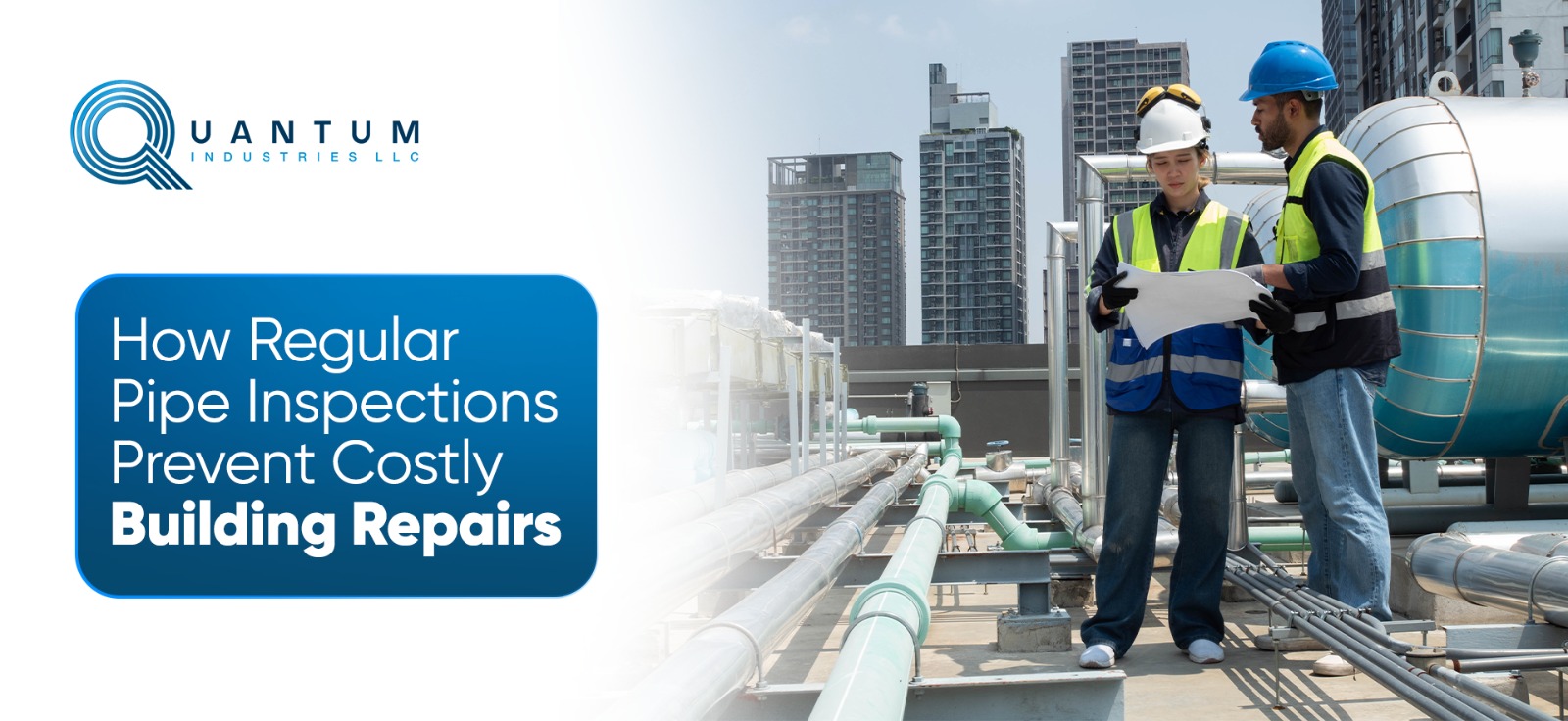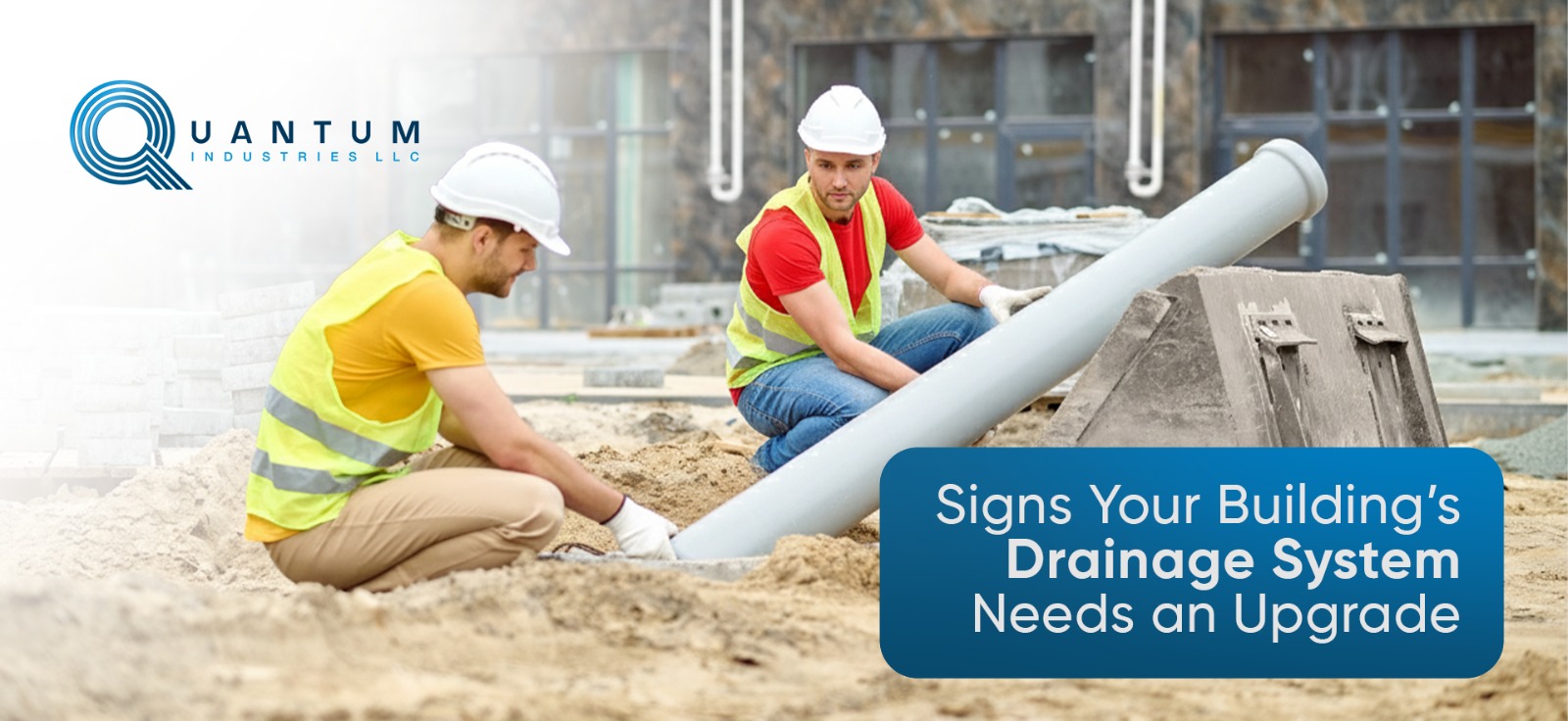February 17, 2025
Things to Consider While Choosing and Buying PPR Pipes
PPR pipes (Polypropylene Random Copolymer) are widely used in plumbing and industrial applications. They are known for durability, high-temperature resistance, and corrosion-free nature. However, while using PPR pipes, various elements must be considered to guarantee the full efficiency and durability of the product. Read along the blog Things to Consider While Choosing and Buying PPR Pipes to know more about the major aspects to check when you select and purchase PPR pipes by the experts at Quantum Industries LLC, the top PPR pipe Manufacturers Suppliers in UAE.
Application Requirements
Before selecting PPR pipes, it is important to assess the specific needs of the project. Different application requires different pressure ratings, temperature resistance, flow rates, etc.
- Potable Water Systems: Make sure water supply pipes are approved for potable use. Pipes must be free from toxic chemical fluids that could contaminate water.
- Heating Systems: Hot water systems require PPR pipes that can withstand high temperatures without deforming or weakening.
- Industrial Applications: Some industrial settings need pipes with chemical resistance and higher pressure ratings. (to handle aggressive fluids and gases.)
- HVAC Systems: Heating, ventilation, and air conditioning setups need pipes that can handle both temperature fluctuations and high pressure as well.
Having a better understanding of the specific needs of the project helps in choosing the right type of PPR pipes that will function efficiently under given conditions.
Pipe Diameter and Flow Rate
The diameter of PPR pipes is important to know the flow rate and system pressure. Choosing the right diameter permits the efficient movement of fluids with minimum pressure losses.
- Larger Diameters: These allow for higher flow rates, making them suitable for industrial applications or main water supply lines.
- Smaller Diameters: These are more appropriate for household plumbing but may lead to increased pressure loss due to friction.
- Balancing Flow Rate and Pressure Loss: Selecting the proper size pipe involves calculating the required flow rate based on project specifications. If the diameter selection is poor, a number of undesirable results could occur in water delivery or excessive pressure loss that can, for example, threaten the pump with cavitation.
Advisors can assist in determining the right pipe diameter based on water demand and pressure requirements of the system, revealing our best PPR pipe suppliers in UAE.
Pressure Ratings
Each of the PPR pipes has different pressure ratings. PN10, PN16, PN20, PN25, etc. The pressure rating is the maximum pressure that can be tolerated by the pipe under normal conditions.
- PN10: Suitable for low-pressure applications such as cold water supply.
- PN16: The best option for slightly higher-pressure applications, including moderate-temperature water supply.
- PN20: Used for high-pressure hot water systems, commonly found in heating installations.
- PN25: Recommended for industrial settings and HVAC systems where high pressure is a concern.
Selecting a PPR pipe with a pressure rating that exceeds the system’s peak demand ensures longevity and prevents system failure due to pressure fluctuations.
Temperature Tolerance
PPR pipes, which can be used at a maximum temperature of 95 degrees Celsius, are most suitable for use in a hot or cold water application. A pipe should, however, be selected that can, up to the end of its life cycle, withstand temperature ranges in which it is being used without experiencing structural failure.
- Hot Water Applications: Make sure the chosen pipe can handle the operating temperature without softening or deforming.
- Thermal Expansion Considerations: This means that with temperature changes, the PPR pipes expand and contract. Proper techniques dealing with these movements include expansion loops as well as pipe supports.
- Lifespan under Heating: Exposure of the pipe to high temperatures and extreme heat for extended periods increases wear on the materials. One would have high-quality pipes for making certain that functionality for years without compromising them.
Quality and Certification
Quality should be a top priority when choosing PPR pipes. Low-quality pipes might not meet industry standards. It can also lead to frequent maintenance issues or system failures.
- Look for Certified Products: Make sure that the pipes meet international standards such as ISO 15874, which guarantees compliance with safety and durability regulations.
- Material Composition: The pipes shall be made from virgin PPR resin and not from recycled materials for the purity and structural integrity of the pipes.
- Manufacturer Specifications: The reliable manufacturers have made the pipe sizes, pressures, and temperature ranges so simple, easy to follow, and at most points check other things, such as the compatibility of the product with a given project.
Opting for certified and high-quality pipes reduces long-term maintenance costs and improves the reliability of the plumbing or industrial system.
Installation and Maintenance
PPR pipes are known for their easy installation process. But some factors should be considered to make sure proper setup and maintenance.
- Fusion Welding: PPR pipes are commonly joined using heat fusion, creating strong, leak-proof connections. You have to make sure that installers are trained in fusion welding techniques for optimal results.
- Pipe Support and Expansion Gaps: Proper support prevents sagging and stress on the joints. Allowing for expansion gaps accommodates temperature-induced movement, preventing cracks or leaks.
- Routine Maintenance: While PPR pipes are low-maintenance, periodic inspections help identify issues such as minor leaks or improper fittings before they become major problems.
Investing in professional installation services and routine check-ups ensures the longevity of the piping system.
Cost and Budget
While price should not be the sole deciding factor, it is important to balance cost with quality and long-term value.
- Initial Purchase Cost: Compare different brands and their specifications to find cost-effective solutions without compromising quality.
- Long-Term Investment: Cheaper pipes may seem cost-effective at first, but very often lead to other repairs and replacements. Once installed, good-quality pipes should not give way to expensive troubles in the long run.
- Total Cost of Ownership: Installation costs, maintenance fees, and future lives of replacement should be taken into consideration if you plan on selecting the best for your budget.
Choosing durable pipes with minimal maintenance needs results in cost savings over the lifespan of the system.
Choosing a Reliable Supplier
A good supplier assures quality pipes by selecting an appropriate supplier who specializes in PPR pipes and related fittings. Some features of a good supplier include:
- A Wide Range of Products: Various ranges of sizes, thicknesses, and pressure ratings for customization purposes.
- Technical Support: A learned supplier can guide you to choose what product best fits the application.
- After-Sales Service: Support for installation, maintenance, and troubleshooting make certain of a smooth project execution.
- Reliable Warranty Policies: Suppliers are confident in the quality of their products and offer warranties or guarantees on their products.
Purchasing from a reputable vendor reduces the risk of receiving substandard products and allows for the smooth execution of the project.
Why Choose Quantum Industries for Your PPR Piping Needs?
At Quantum Industries, we understand that quality, durability, and precision matter when it comes to PPR piping solutions. Our QTherm PP-R Piping System is engineered to deliver seamless performance, leak-proof connections, and long-lasting reliability across residential, commercial, and industrial applications. With a wide range of fittings including elbows, adaptors, tees, unions, and manifolds, we make sure of efficient fluid flow management and hassle-free installations.





